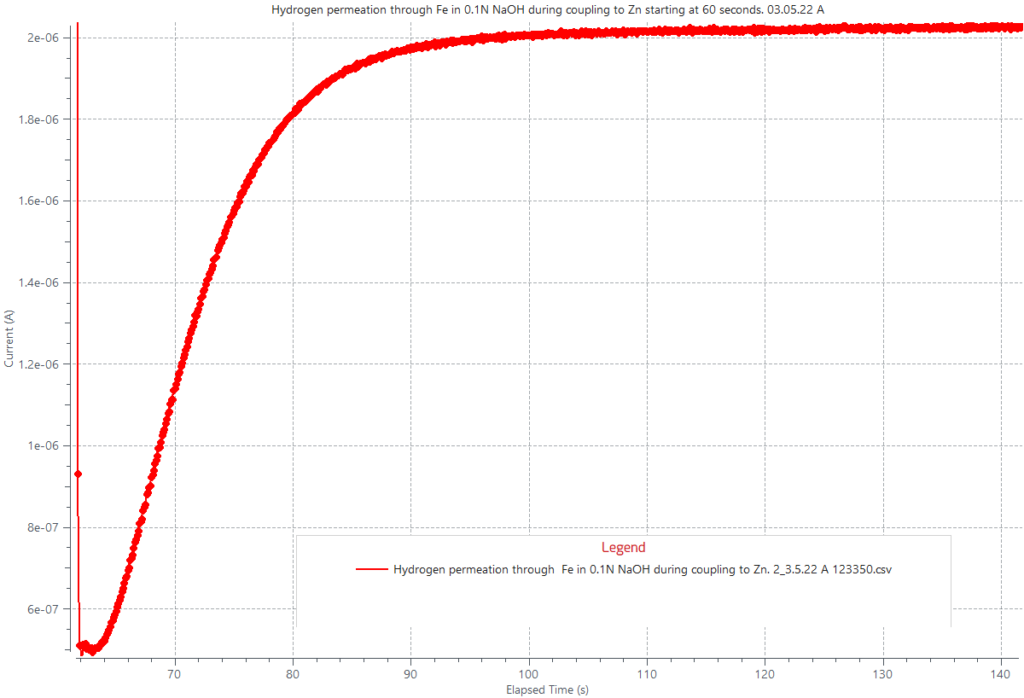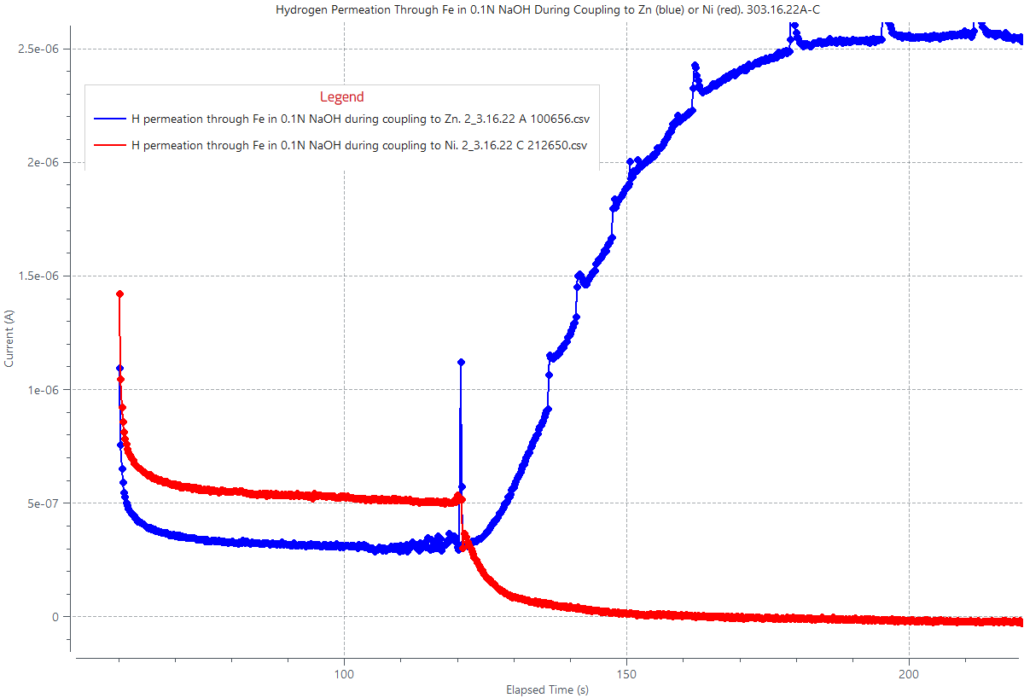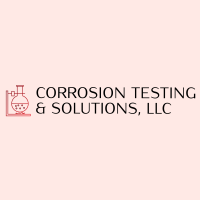HYDROGEN PERMEATION
UNIFORM CORROSION
Metals can absorb hydrogen (H) from corrosion processes, from welding, and from metal manufacture such as forming, coating, plating, and acid cleaning. The absorption and diffusion of atomic H in a metal can seriously impair its corrosion resistance and its mechanical properties. The harmful effects of hydrogen is influenced by its diffusivity rate and the density of hydrogen traps in the host metal lattice. Irreversible traps, such as oxides, requiring temperatures above 600 ºC for H to be released, are sometimes used as means to capture H atoms to prevent their diffusion and suppress hydrogen-induced metal cracking.
Hydrogen permeation through metal alloys is measured with an electrochemical hydrogen permeation (HP) cell which has two compartments separated by the test specimen. One compartment is the hydrogen charging side and the opposite compartment is the hydrogen exit side where the diffusing H atoms are detected, giving rise to a H permeation flux. Hydrogen permeation parameters are determined from permeation graphs to characterize embrittlement in metals. Hydrogen damage in metal alloys due to metal embrittlement and cracking is subject to the type of alloy, the corroding environment, and the state of residual internal stress or externally applied stress. Hydrogen can induce other forms of failure. Industrial pressure transducers fail when hydrogen diffusing through their metal diaphragms recombine at the diaphragm H exit surface, distorting the pressure readings. The source of hydrogen arises from free corrosion of the metal diaphragm. To avoid failures, the proper diaphragm material can be selected to suppress hydrogen diffusion.
The propensity of H to enter and diffuse through a metal is measured by applying galvanostatic or potentiostatic electrolytic conditions to the metal in the charging compartment of the hydrogen permeation cell. Mild cathodic charging is necessary to generate a well defined hydrogen permeation transient curve to best characterize the hydrogen diffusion parameters. Free corrosion and galvanic corrosion can also induce hydrogen absorption, diffusion, and permeation through a metal from the respective reduction reactions at the surface of a freely corroding metal or at the surface of the more noble metal in a galvanic couple.
The figure below shows the hydrogen permeation (HP) curve from a 500 µm thick iron (Fe) plate due to its galvanic coupling to zinc by electrically connecting both metals simultaneously exposed to 0.1M H2SO4 solution in a HP cell. The galvanic coupling induced a cathodic galvanic current of 2.1 mA/cm2 generating H gas at the Fe metal surface, the more noble metal. A fraction of the generated H dissociated and absorbed as H atoms which diffused into the iron lattice until a steady H permeation flux was reached.
Another figure below displays a red and a blue curve corresponding to two different galvanic coupling tests. The blue curve displays hydrogen permeation through Fe due to reduction reactions on its surface when it was coupled to zinc, the less noble metal experiencing oxidation reactions. The red curve presents a galvanic case where Fe is instead the less noble metal when it is coupled to nickel, the more noble metal. Accordingly, the red curve shows oxidation current decay from Fe when it is coupled to nickel.
Hydrogen permeation measurement and determination of hydrogen uptake and transport in metals is done according to ISO/FDIS17081-2004 or ASTM G148. This practice uses an electrochemical technique to determine effective diffusivities of hydrogen atoms in metals. The hydrogen uptake is determined based on the steady-state hydrogen permeation flux.

Hydrogen permeation through 1 cm2 area of iron plate, 500 µm thick, due to its galvanic coupling with zinc in 0.1M H2SO4. The coupling induced a 2.1 mA/cm2 of cathodic current generating hydrogen at the iron surface, some of which absorbed as atomic H and diffused through the iron plate, reaching a steady state H permeation flux.

